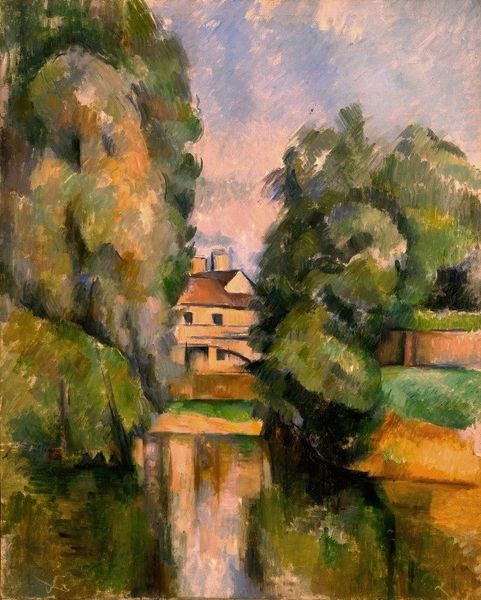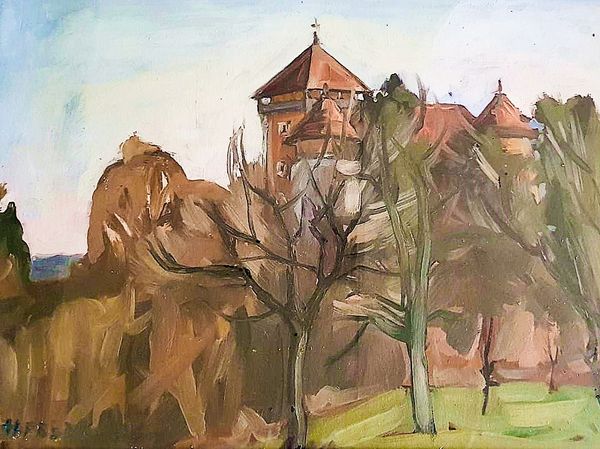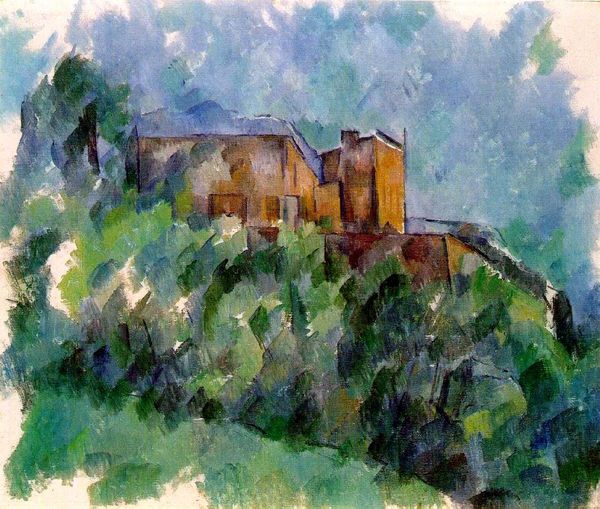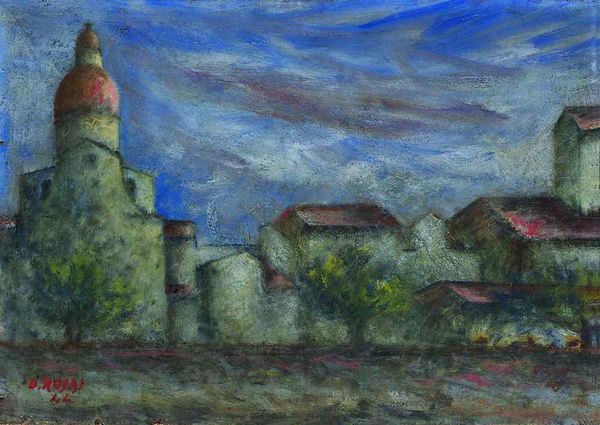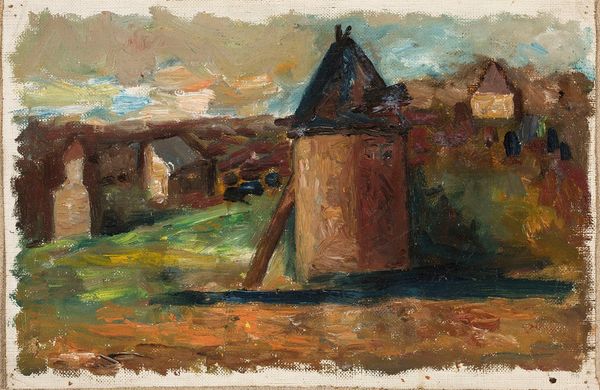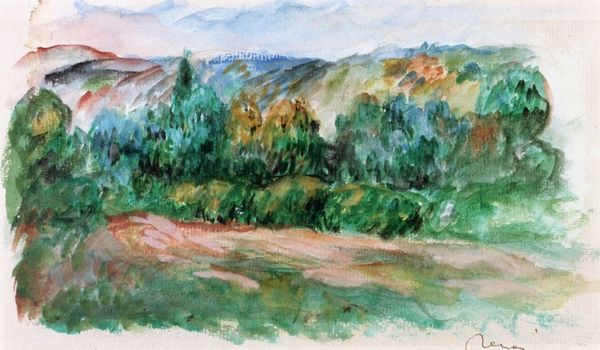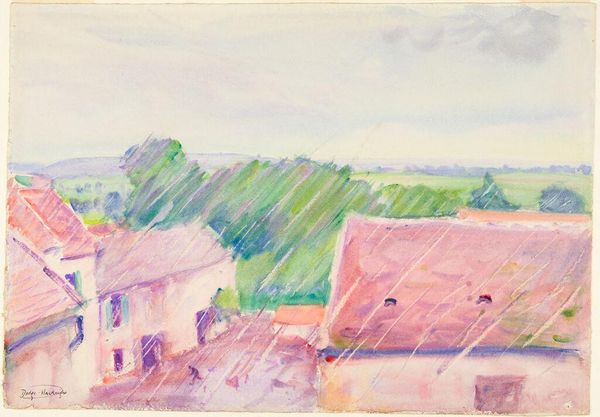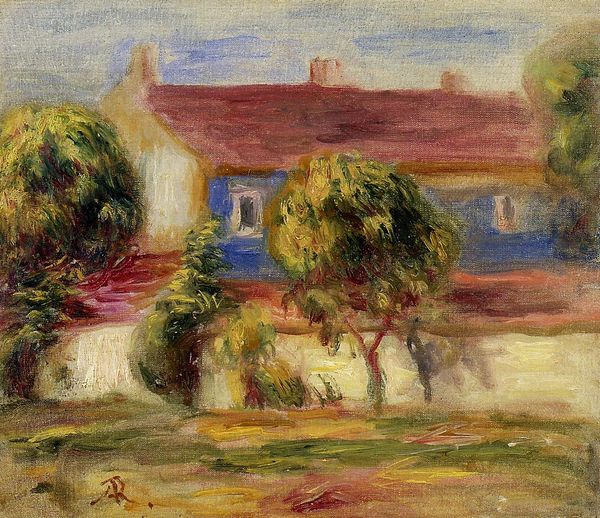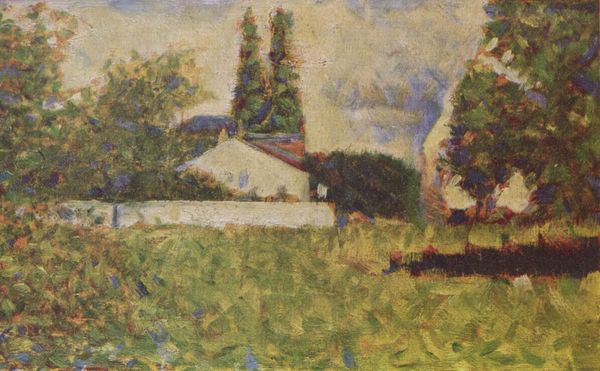
French Landscape with a Church 1915
0:00
0:00
rodericoconor
Fitzwilliam Museum (University of Cambridge), Cambridge, UK
Copyright: Public domain
Curator: We're now looking at Roderic O'Conor's "French Landscape with a Church," painted in 1915. This oil painting, now housed at the Fitzwilliam Museum, is an example of O’Conor’s engagement with post-impressionism. Editor: My first thought? Serenity. It’s dreamlike. The way the brushstrokes dance across the canvas, blurring the lines between the church and the sky… it feels like a memory, fading at the edges. Curator: It’s fascinating to consider the sociopolitical context here. O’Conor, though Irish, spent considerable time in France. In 1915, during the height of World War I, rural France served as a refuge for many artists who rejected the war's destructive path. His landscapes can be seen as a desire to turn his attention to less controversial or stressful subjects. Editor: Yes, but even landscapes can carry loaded meaning! This piece could also represent the idealized, romantic view of the French countryside versus the grim reality of warfare that defined many lives then. Are we looking at an active rejection, or merely a passive ignorance? It forces you to ask questions about representation and responsibility. Curator: Indeed. O'Conor’s use of color is also striking. The pastel hues create an ethereal quality, moving away from the direct observational style associated with earlier landscape painting. It seems he prioritizes emotion and mood over strict realistic accuracy. Editor: Precisely! The flattening of perspective further enhances that dreamlike effect. There's a deliberate simplification in forms. It’s as though he's painting not what he sees, but how the landscape feels, particularly against a landscape marked by wartime experience. Curator: O'Conor’s art education happened in Paris, after which he went to Brittany. Later in his career, during the first half of the twentieth century, we can definitely detect the echoes of Gauguin and the Pont-Aven School in his application of color. This places him as both a participant in and an observer of avant-garde practices on the Continent. Editor: Absolutely. We need to remember that movements never happen in isolation, and how artists negotiate personal experiences and contemporary narratives within those art movements are never simple issues. I find the ambiguity so powerful here; the artist expresses beauty while hinting at a time of widespread destruction. Curator: A beautiful, yet troubled harmony then. It certainly adds layers of depth to the work. Editor: Indeed, prompting a reflective pause. It makes me think differently about landscapes.
Comments
No comments
Be the first to comment and join the conversation on the ultimate creative platform.
